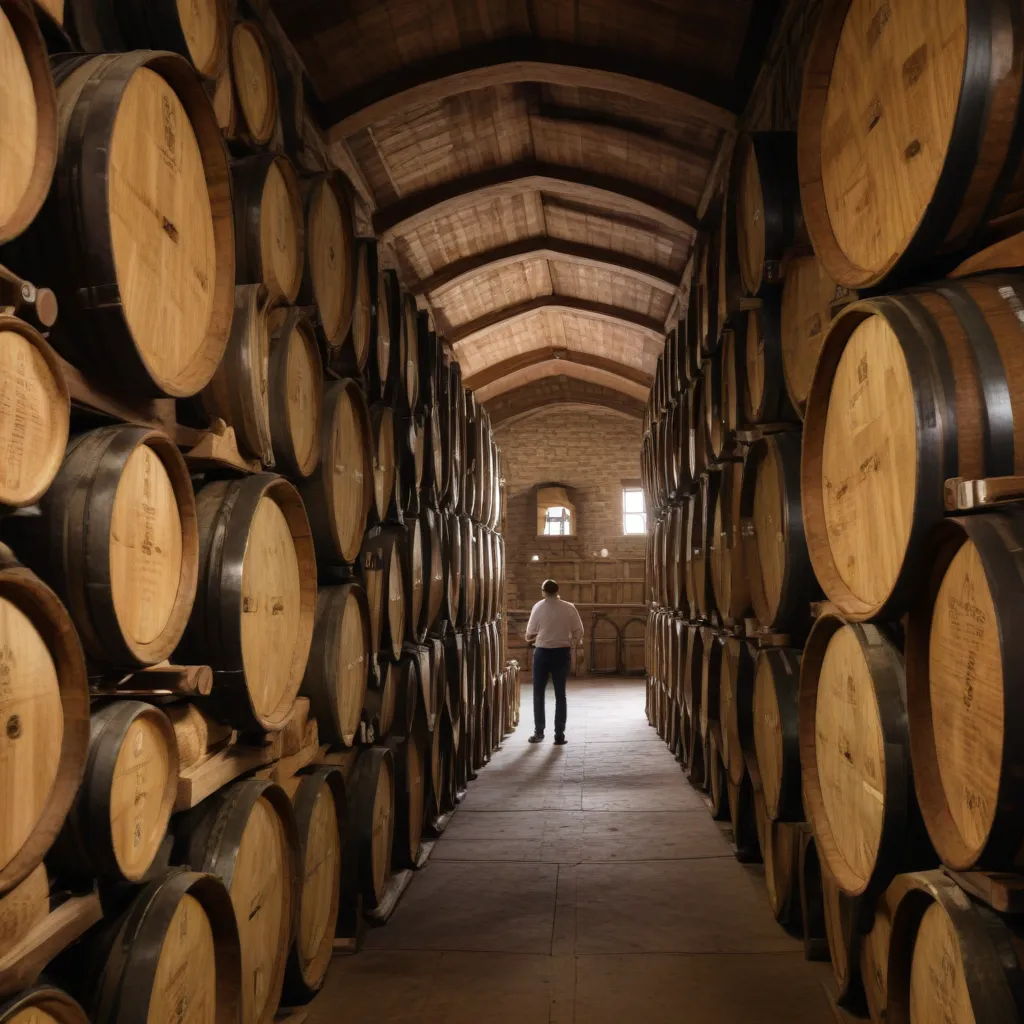
As passionate vintners at Wine Garden Inn, we understand the profound impact that oak aging can have on the quality and character of our wines. From the careful selection of the oak to the nuanced orchestration of the aging process, this art form is pivotal in unlocking the full potential of our hand-crafted offerings.
The Science of Oak Interaction
At the heart of oak aging lies the intricate interplay between the wine and the wood. The chemical composition of oak, marked by an array of organic compounds, is the foundation upon which this transformative journey unfolds.
Chemical Composition of Oak
Oak barrels are rich in tannins, vanillins, lactones, and a host of other aromatic substances that are gradually extracted and integrated into the wine over time. The specific forest of origin, the grain tightness, and the cooper’s artistry in toasting the barrels all contribute to the unique fingerprint that each oak vessel imparts.
Extraction of Oak Compounds
As the wine integrates with the oak, a slow and steady extraction of these compounds occurs. The duration of aging, the temperature, and even the wine’s pH and alcohol content can influence the rate and intensity of this exchange, allowing us to fine-tune the final expression of our wines.
Oak Toasting Levels
The toasting process, where the oak is exposed to controlled heat, also plays a pivotal role. From light to heavy toasting, the development of caramelized sugars, spicy notes, and even a hint of char can dramatically shape the flavor profile of the wine, offering us a broad palette to work with.
Mouthfeel and Oak Aging
Beyond the sensory delights, oak aging also enhances the wine’s mouthfeel, contributing to an elevated tasting experience.
Impact on Texture
The interaction with oak barrels introduces tannins that integrate seamlessly with the wine’s natural tannins, creating a more refined and balanced structure. This added complexity enhances the wine’s perceived viscosity, lending a silky, velvety texture that lingers on the palate.
Tannin Integration
The polymerization of tannins, facilitated by the oak, results in a smoother, more approachable mouthfeel. As these tannins mature and soften, they provide a harmonious counterpoint to the wine’s acidity and fruit, creating a harmonious symphony of flavors.
Perceived Viscosity
The subtle addition of oak-derived compounds, such as lactones and vanillins, can heighten the wine’s perceived viscosity, creating a luxurious, full-bodied mouthfeel that delights the senses. This added richness and texture can elevate the overall drinking experience.
Styles of Oak Aging
At Wine Garden Inn, we carefully consider the type of oak and the duration of aging to achieve the desired profile for each of our wines.
New Oak vs. Neutral Oak
The use of new oak versus neutral oak barrels can have a profound impact on the wine’s final character. While new oak imparts bold, assertive flavors, neutral oak, with its diminished influence, allows the wine’s natural attributes to shine through.
Influence of Oak Origin
The origin of the oak, whether it’s French, American, or Hungarian, also plays a significant role. Each region’s unique terroir and the cooper’s techniques lend distinct aromatic and structural qualities to the wine.
Seasoning and Toasting
The seasoning and toasting process of the oak barrels further refine their impact. Longer seasoning periods and higher toasting levels can heighten the integration of oak-derived compounds, creating a more seamless harmony between the wood and the wine.
Duration of Oak Aging
The length of time the wine spends in oak barrels is a critical consideration. Short-term aging may impart subtle oak nuances, while long-term aging can lead to a more profound transformation, unlocking layers of complexity.
Monitoring Oak Integration
Throughout the aging process, our meticulous monitoring of the wine’s evolution allows us to make informed decisions about the optimal time to bottle. We carefully assess the wine’s integration with the oak, ensuring that the final product strikes the perfect balance between fruit, structure, and oak influence.
Sensory Profiles of Oak-Aged Wines
The culmination of our oak aging efforts is reflected in the sensory delights that our wines offer.
Aromatic Complexity
The oak-derived flavors of vanilla, baking spices, and toasted nuts can harmoniously intertwine with the wine’s natural fruit aromas, creating a multi-layered bouquet that captivates the senses. The integrated wood notes add depth and sophistication to the wine’s overall profile.
Structural Integration
The tannins from the oak integrate seamlessly with the wine’s own tannins, resulting in a balanced structure that supports the wine’s longevity and enhances its overall mouthfeel. This structural harmony allows the wine to age gracefully, unveiling new layers of complexity over time.
Oak Aging Techniques
At Wine Garden Inn, we employ a range of oak aging techniques to unlock the full potential of our wines.
Barrel Fermentation
By fermenting certain wines directly in oak barrels, we can harness the temperature-controlled environment and the lees interaction to impart subtle oak influences from the very start of the winemaking process.
Alternative Oak Formats
In addition to traditional oak barrels, we also experiment with oak staves and oak chips, which allow us to fine-tune the oak integration and introduce specific flavor profiles to complement our wines.
Whether you’re a seasoned wine enthusiast or an aspiring oenophile, we invite you to explore the world of oak aging with us at Wine Garden Inn. Join us as we continue to push the boundaries of winemaking, crafting complex and exceptional vintages that celebrate the art of oak aging.
